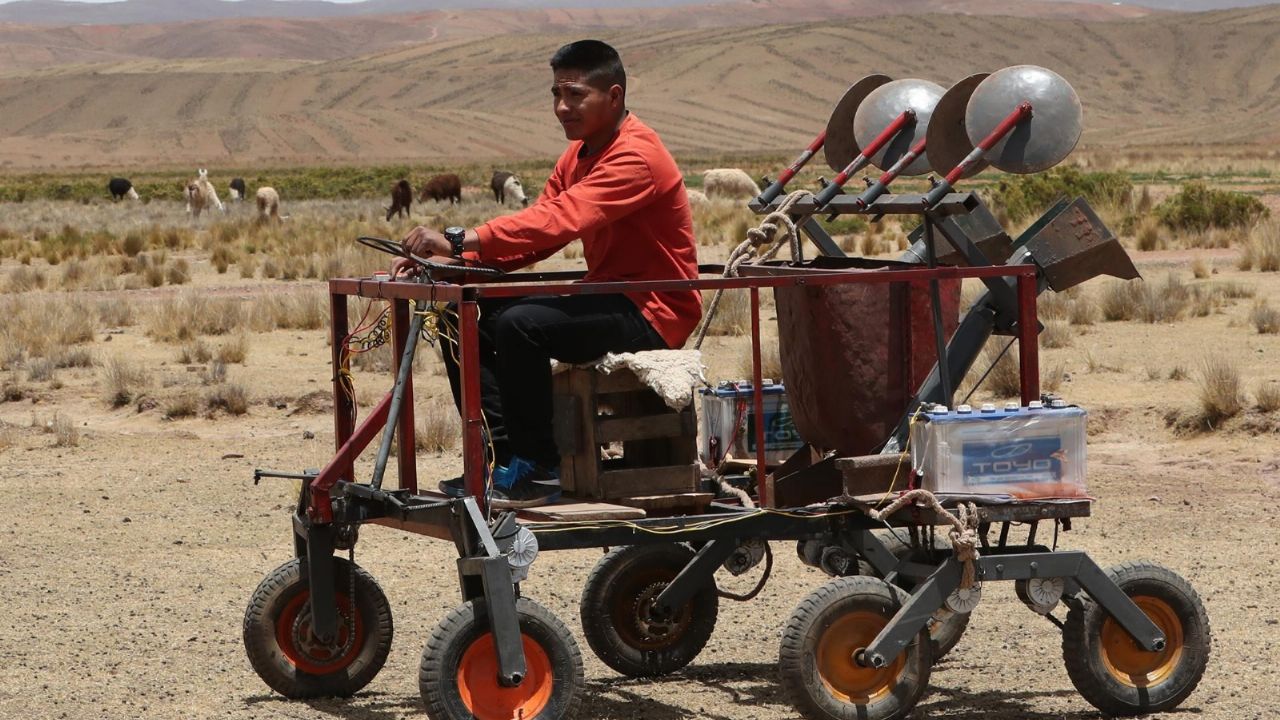EFE / Quinamaya, Bolivia
Satiri, which in Aymara means sowing, is the name of a robot designed by 22-year-old Bolivian Ramiro Mamani, who channeled his knowledge to make a prototype to plow the land and plant potatoes in minimal time in the harshness of the Bolivian highlands.
It is the twenty-second prototype of old robots that Mamani, the second of seven siblings, designed since he was 16 years old and that served to give life to Satiri, something he had to do for lack of “resources,” as he explained to Efe.
The artifact works in the plains of Quinamaya, a small town 35 kilometers southwest of La Paz, where Ramiro’s parents, Ladislao and Rosa, have a small house with domestic animals such as cows, llamas and sheep, as well as a plot in the that plant barley or potato.
A discovered vocation
Mamani discovered his love for circuits when he left the town’s primary school and went to the Viacha school, the most important city near Quinamaya, with a good reputation for teaching robotics.
The young man saved money since his school days and worked on Sundays in factories to later get some essential pieces for a new creation or buy the first tools.
You can also read: The Bumblebee made in Bolivia has an extra power: the love of a son to a father
From that came a sequel to line-following robots, which collect garbage or solve labyrinths, which after finished gave life to new ones since it has had to “disassemble and reuse components” in order not to stop, he said.
Over the years he entered the Public University of El Alto to study electronic engineering, thus he participated in several competitions with some victories that made him stand out.
A workshop in a stable
The “batcave” is the name of Mamani’s workshop, a kind of gabled house, in which are his tools, circuits, computer and that at night serves as a garage for Satiri.
The inventor recalled that the workshop “was a barn to store cow manure” made of rustic adobe and that it was about to collapse until his father, who in his youth was the only one in the area capable of installing solar panels or pumps. of water, prompted him to do the remodeling.
At the top of the main wall, as if it were the altarpiece of a church, is the image of Albert Einstein, from there other figures such as Steve Jobs, Nikola Tesla or Stephen Hawking, who are the “inspiration” of Mamani emerge. when you decide to create.
At the bottom a small blackboard on which he traces the designs by hand and to one side a computer for simulations and plans of his work based on mathematical formulas.
The seeder robot
During last year’s quarantine, Mamani returned to his parents’ home in Quinamaya to help with field tasks while taking classes remotely, often on the top of a hill to pick up the internet signal.
“If I have been to contests why not make a robot better to help my parents in planting potatoes”, was the idea he had when he observed that his parents complained about back pain and pain in other parts of the world. body.

Mamani recalled that to finance his project “the main problem was money”, so he began to collect some objects such as old wheelbarrows, molds or pieces of iron to form the structure and buy other elements.
You can also read: Bolivian boy built a pianist robot and will go to NASA
“I have had to sell a bull to buy the batteries” for the truck that can be recharged and serve to give autonomy of movement to the robot that is used for plowing and sowing and which was initially remote-controlled.
Satiri has an iron steering wheel, a box with a sheepskin leather serves as the driver’s seat, and has a system of plow discs to which an old piece of rail must be attached for pressure, all of which makes it perform well.
Mamani says that his robot does the work of about four people and that, with it, the preparation of the earth, which can last about eight hours by hand, is reduced to about two, in addition, that the energy costs are lower.
“I would like to develop projects or robots to help society, generally where more physical effort is needed”, is the dream of this young man who has taken a break in his studies to enlist in compulsory military service, a factor of social renown in the rural area of the country.


















